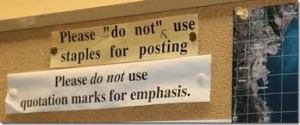Many’s the person who’s thought to themselves, “I’ve had an interesting life. I should write my memoir.” And they’re right: there’s a book in every one of us, whether we’ve lived what to the ordinary world would seem an interesting life or not. As the famous psychiatrist Carl Jung said in his book Memories, Dreams and Reflections, “My life has been singularly devoid of outward happenings.” Yes, but he had the most remarkably rich interior life. And maybe, so did you.
So, where to begin?
Most people make the mistake of beginning at the beginning — you know: I was born in Hampstead in 1952 on a rainy Sunday. Both my mother and father were doctors. This start will often gain the writer a few chapters, but then, something very mysterious seems to happen: the memoirist runs out of steam.
What has happened here?
What has happened is that, when writing a memoir (and sometimes, even, a novel), beginning at the historical beginning is not always the best way to go about it. By trying to follow a chronological path, the writer often finds the work has become bland, a mere retelling of facts. It doesn’t live. There’s no passion. Realising this is the kiss of death for most would-be memoir writers. At this point, most begin to lose interest. Perhaps they don’t want to write a memoir, after all.
This happens. And it happens a lot. What to do if this happens to you?
The best thing to do is to stop trying to write it chronologically. Just write whatever scene you feel like writing that day. Anything from your past at any stage will do. That way you will bring passion to the work and it will not become bland. With this method, you’ll probably have a lot of writing to do later to link all your various scenes together, but seeing the vivacity and worth of what you’ve written will give you the strength to do this in the later stages.
If you’re stuck on a memoir, try it. You might be surprised at how much more interesting the work you produce this way will be.
Need help? Don’t hesitate to contact me.

















